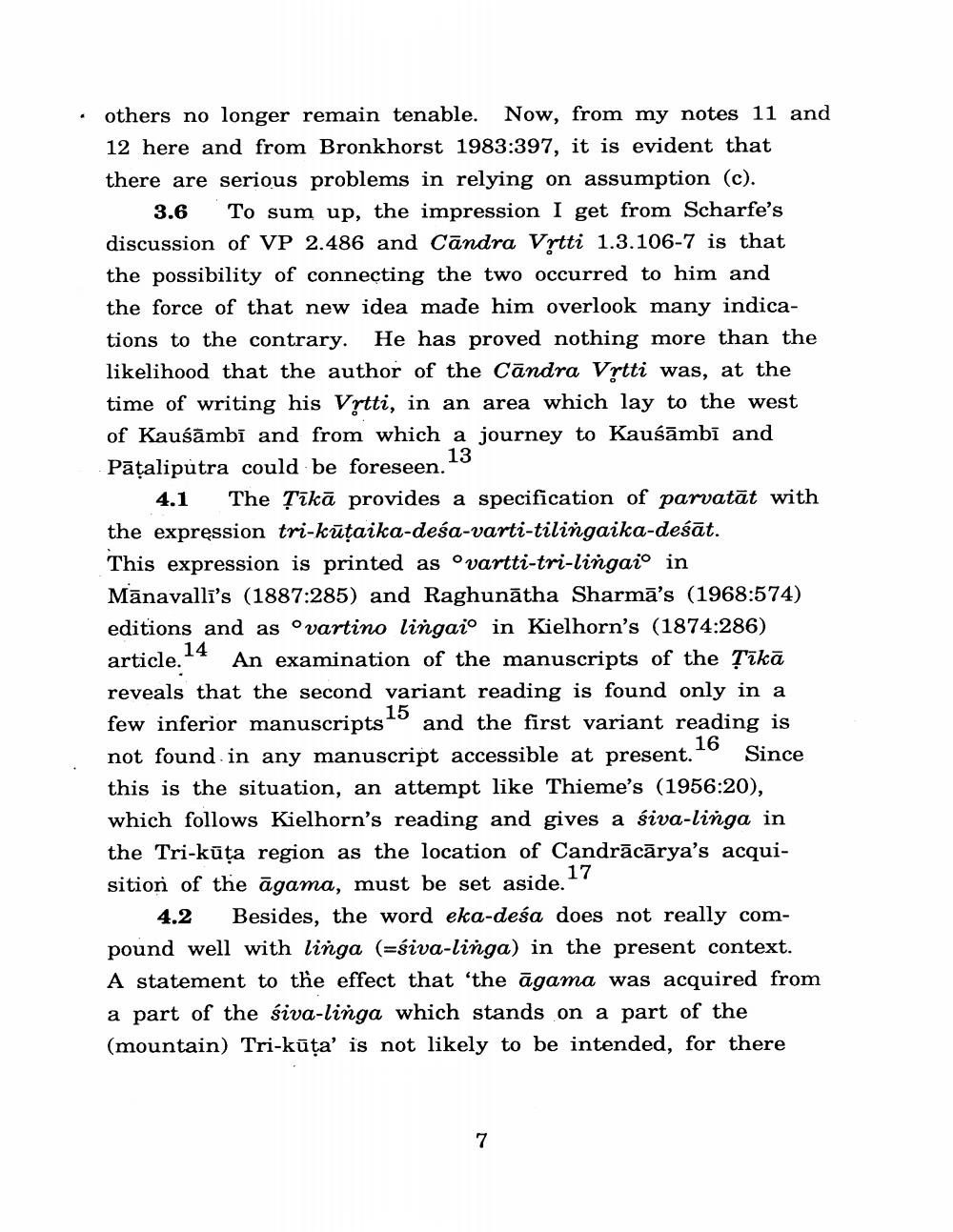Book Title: Paninian Studies Author(s): Ashok Aklujkar Publisher: Ashok Aklujkar View full book textPage 7
________________ · others no longer remain tenable. Now, from my notes 11 and 12 here and from Bronkhorst 1983:397, it is evident that there are serious problems in relying on assumption (c). 3.6 To sum up, the impression I get from Scharfe's discussion of VP 2.486 and Cāndra Vrtti 1.3.106-7 is that the possibility of connecting the two occurred to him and the force of that new idea made him overlook many indications to the contrary. He has proved nothing more than the likelihood that the author of the Candra Vrtti was, at the time of writing his Vrtti, in an area which lay to the west of Kaušāmbi and from which a journey to Kaušāmbī and Pāțaliputra could be foreseen.13 4.1 The sīkā provides a specification of parvatāt with the expression tri-kūțaika-deśa-varti-tilingaika-deśāt. This expression is printed as "vartti-tri-lingaio in Mānavalli's (1887:285) and Raghunātha Sharma's (1968:574) editions and as vartino lingaio in Kielhorn's (1874:286) article. 14 An examination of the manuscripts of the sīkā reveals that the second variant reading is found only in a few inferior manuscripts and the first variant reading is not found in any manuscript accessible at present. Since this is the situation, an attempt like Thieme's (1956:20), which follows Kielhorn's reading and gives a śiva-linga in the Tri-kūta region as the location of Candrācārya's acquisition of the āgama, must be set aside." 4.2 Besides, the word eka-deśa does not really compound well with linga (=siva-linga) in the present context. A statement to the effect that 'the āgama was acquired from a part of the siva-linga which stands on a part of the (mountain) Tri-kūta' is not likely to be intended, for therePage Navigation
1 ... 5 6 7 8 9 10 11 12 13 14 15 16 17 18 19 20 21 22 23 24 25 26 27 28 29 30 31 32 33 34 35 36 37 38 39 40 41 42 43 44 45 46 47
